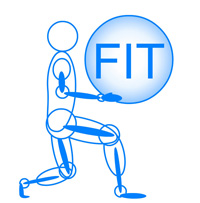As healthcare costs have steadily increased, “wellness” solutions have been created to address health issues and to in effect raise the overall “health quotient” of employee populations.
Our business has focused on reducing workers’ comp cost as it is commonly a large expense for most organizations. Unbeknownst to us in 1992, when developing our protocols, we instinctively incorporated a wellness bent to our training as we knew that back injuries and other sprain/strains were the result of life’s activities, not just work related tasks.
We postulated that if we were going to be successful at reducing workers’ comp costs attributable to sprain/strains, we would have to change physical behavior both at work and at home. After all, a 40-hour week is only 24% of one’s total week!! Consequently, we had to blend wellness, workers’ comp and safety into one program to get the ROI results expected when reducing industry’s most costly claims.
I find it peculiar that there are workers’ comp injury reduction programs and “wellness” programs in many companies that are separate and distinct from one another. In fact, our usual point of contact for our Backsafe® and Sittingsafe® training programs is through Risk Management departments. From our experience, many of the “wellness” based programs are managed through Human Resources.
Let’s take back injuries, for an example. A person’s spine doesn’t care if the 40 pounds of force on lumbar 4 and 5 comes from lifting a box in the warehouse or lifting a baby at home. The techniques generally speaking are the same. Similar techniques apply when helping an elderly parent get up from a couch as with a flight attendant or hotel/hospital housekeeper pulling (when pushing isn’t an option) a 250 pound cart.
The windfall-type workers’ comp savings our clients experience is founded in the approach of combining wellness, workers’ comp and safety into one initiative. If you are spending money to reduce workers’ comp costs, what the heck, why not stop back injuries at home, too?
You see it comes down to management’s goals and purposes of reducing workers’ comp and group health costs. One of the key discoveries responsible for our programs’ effectiveness at reducing musculoskeletal claims (where most other programs didn’t), was to isolate how to get employees to buy-in to changing their physical behavior. If your employees don’t buy-in, then there is no hope that your injury prevention initiatives will work.
Companies were very good at coming up with goals–“There will be a 20% reduction in workers’ comp costs this year!” Management would then create programs such as training programs, etc., to meet this target. “We must reduce claims by 20% because my boss told me so” became the reason for the initiative. They would then get frustrated when employees wouldn’t buy what they were “selling.”
Management had the goal to reduce claims and to save money. It is a great goal and one that is the obligation of every company. Why, then, is it hard to get employees to embrace the subsequent initiatives set forth to accomplish the goal?
Here is what we saw as a key missing point in workers’ comp savings initiatives. Goals must always be accompanied by purposes. You want to get to the top of the mountain as a goal? Good! But why? What is motivating you to suffer and sacrifice that much? The answer is your purpose and will be the driving force to get you there. The purpose may be just “I want to say I did it.” It doesn’t matter. The purpose is what gets you to your goal. Goal–I want to lose twenty pounds. Good goal but what will make that come true is the fact that you have a high school reunion in three months and you want to look HOT! Now that is motivation=your purpose.
Ok, let’s get back to the workers’ comp goal, mandated from above, of reducing workers’ comp by 20% this year. What is your PURPOSE!! All of our clients are coached to have this purpose when contracting with us: “We want our employees to go home healthy every day and to stay healthy when at home.” Do you think your employees would respond better to you caring about their well-being instead of the ubiquitous corporate bottom line?
This little warm and fuzzy slant is an aspect of how the “wellness” philosophy blended with the workers’ comp/safety/risk management business approach makes it a win/win for everyone. What if your employees went home healthy everyday? What if there was say a 50% cut (not unusual) in painful back injuries, shoulder claims, etc.? Who wins?
Employees win because they don’t suffer pain and can support their families. The families win because your employee went home healthy with a paycheck and for good measure taught the children how to lift their 20 pound backpacks correctly for the first time in their lives. The company wins big time because those $35K back claims just got slashed in half.
Management wins because they killed their goal of 20% by tripling it and got a larger year-end bonus as a result.
EVERYBODY wins because your employees have learned that the company gives a damn about them and morale at work has never been better.
I am sure you have a goal to reduce workers’ comp costs. We can help, but only if you have the purpose of helping your employees to stay healthy. Employees will respond to that purpose. They will only buy-in and decide to change their physical behavior if part of your goal/purpose equation includes something they consider valuable to them.
A wellness approach to workers’ comp is not a future trend; it has been working now for over 15 years. Not only will it help your bottom line, it will positively impact your company’s culture.
Prevent tomorrow’s injuries today!™
Dennis Downing, President
Future Industrial Technologies

Recent Comments